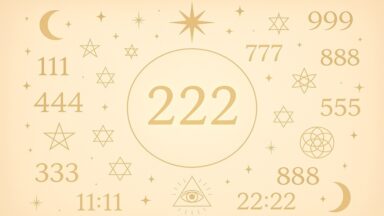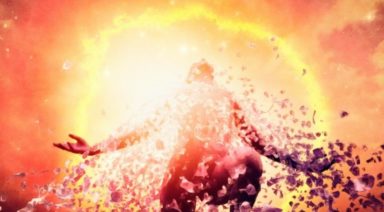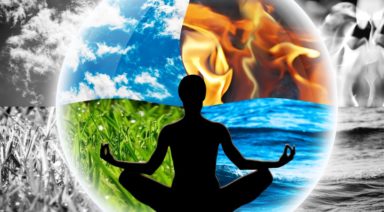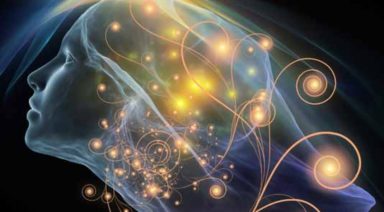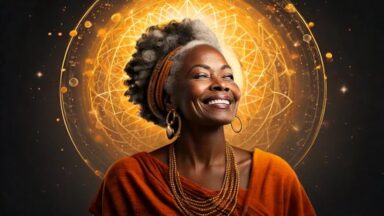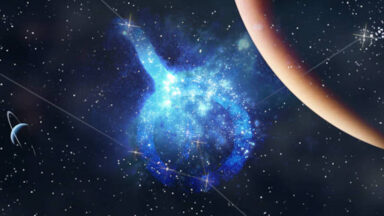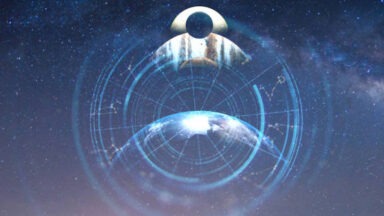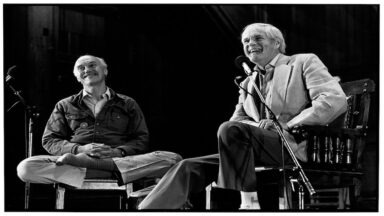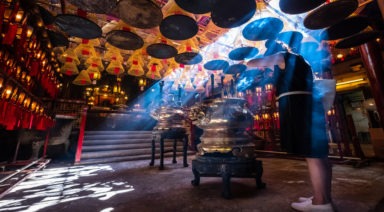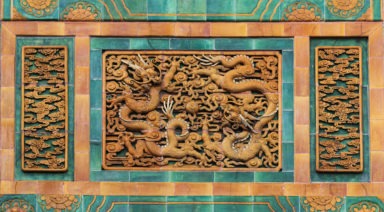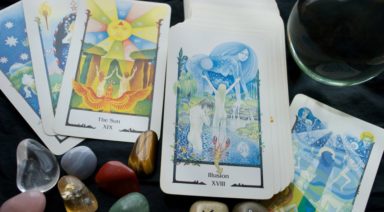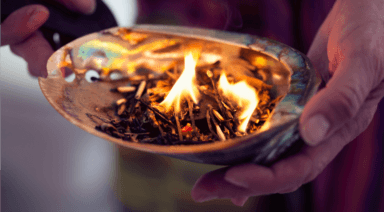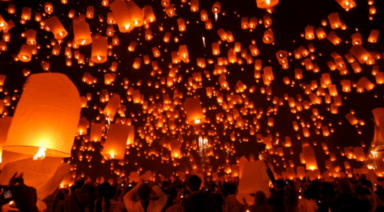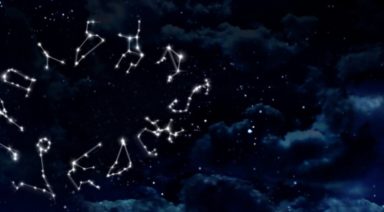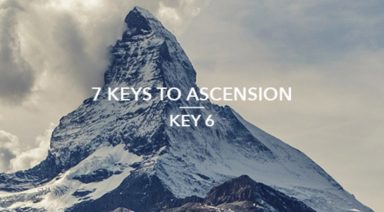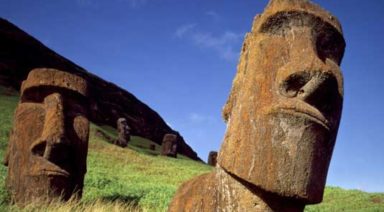The 22 Major Arcana of the Tarot and Their Meanings
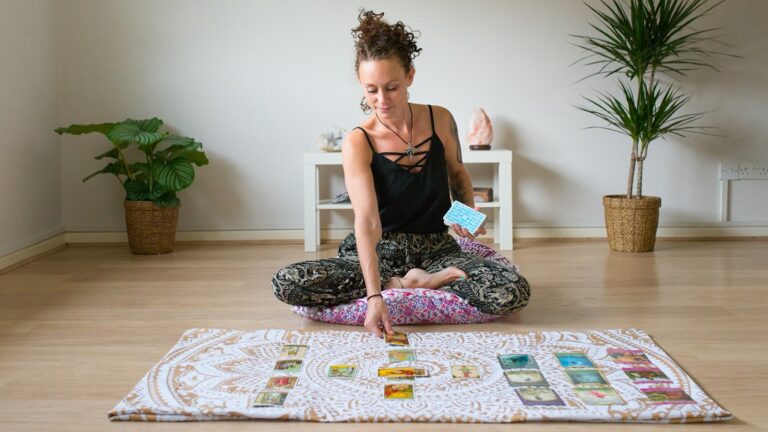
The Major Arcana of the tarot are a set of 22 cards loaded with symbolism that represent spiritual lessons and universal archetypes. Each of these cards guides us through the different stages of personal growth, from beginnings full of potential to full realization. In this article we explore the meanings of the Major Arcana, their importance in tarot and how they can help us understand our own path of spiritual transformation.
Table of Contents
- What are the Major Arcana in the Tarot?
- Difference between Major Arcana and Minor Arcana
- The Fool's Journey and His Spiritual Transformation
- How to Interpret the Major Arcana in a Tarot Spread
What are the Major Arcana in the Tarot?
The Major Arcana are 22 cards that form the backbone of the tarot. They represent universal themes such as love, transformation, balance and spiritual enlightenment. These cards, numbered from 0 (The Fool) to 21 (The World), describe a symbolic journey of evolution and personal growth. Each has a profound meaning that goes beyond everyday events, touching on the most important spiritual and emotional aspects of life.
Since their appearance in the tarot decks of the Renaissance, the Major Arcana have been interpreted as a tool to explore the unconscious and to connect with larger spiritual truths. These cards act as mirrors of our psyche, helping us to reflect on our emotions, actions and decisions at crucial moments.
In the series Mystery Teachings of the Tarot, available on Gaia, the deeper symbolism and meanings of these cards are explored. This series offers a practical and spiritual guide to interpreting the tarot and understanding how each major arcane can be a powerful tool for personal transformation.

Difference Between Major Arcana and Minor Arcana
The Major Arcana and the Minor Arcana make up the two main parts of a tarot deck. The Major Arcana represent great spiritual lessons, while the Minor Arcana focus on more practical, everyday issues. For example, the Major Arcana speak to themes such as life purpose, inner transformations and significant challenges, while the Minor Arcana reflect emotions, relationships and specific day-to-day situations.
In turn, the Minor Arcana are divided into four suits: clubs, cups, spades and golds. These suits relate to different areas of life: creativity, emotions, intellect and material matters, respectively. The combination of the Major and Minor Arcana in a spread allows the reader to interpret both the big picture and the specific details of a situation, offering a complete and profound vision.

The Fool’s Journey and His Spiritual Transformation
The Fool’s journey, represented by the 22 Major Arcana, is a metaphor for spiritual transformation. Each card symbolizes a key stage in the process of self-discovery, from initial innocence to full realization. This journey guides us through learning and challenges that reflect personal growth and connection with the divine.
The Fool: the beginning of a new adventure
The Fool marks the beginning of the spiritual journey, symbolizing the unlimited potential and the courage of the unknown. This card encourages us to take a leap of faith, with enthusiasm and confidence in the possibilities that await us. Although the direction is unclear, it represents the opportunity to explore and grow without fear of failure.
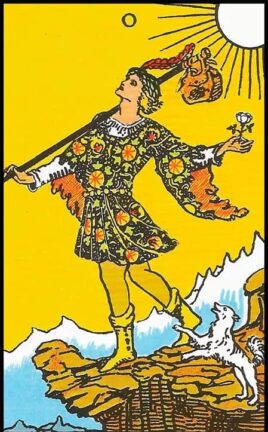
The Magician: skill and personal power
The Magician reflects the ability to transform ideas into reality using the tools available. This card symbolizes personal power and the connection between the spiritual and the material. It reminds us that, with confidence and focus, we can manifest our desires and take control of our lives.
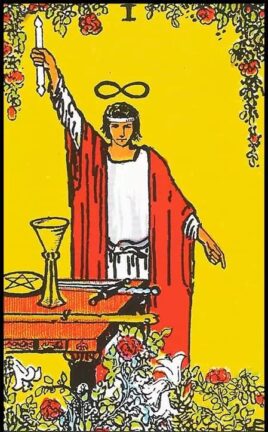
The High Priestess: inner wisdom and secrets
The High Priestess represents introspection, intuition and hidden knowledge. She invites us to look within and trust our inner voice to discover deeper truths. This card teaches us that true power comes from self-knowledge and connection with the subconscious.
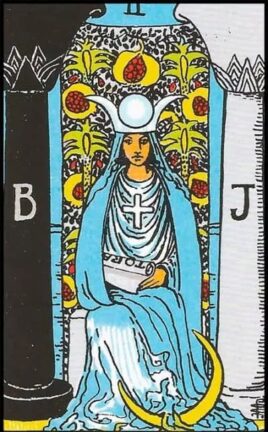
The Empress: creativity and abundance
The Empress symbolizes fertility, creativity and connection with nature. It represents the blossoming of ideas and abundance in the physical world. This card reminds us of the importance of nurturing our projects and enjoying the beauty and prosperity that surrounds us.

The Emperor: order and authority
The Emperor embodies stability, structure and leadership. It teaches us to set boundaries and organize our lives to achieve our goals. This card symbolizes responsibility and the balanced use of authority to create a solid and secure environment.
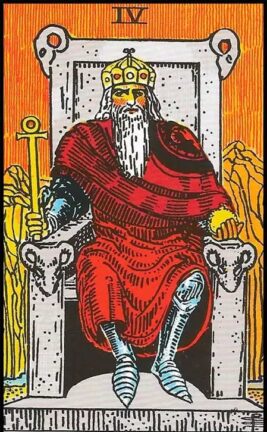
The Hierophant: teaching and tradition
The Hierophant symbolizes the knowledge transmitted through traditions, rituals and spiritual authority figures. This card invites us to seek guidance in the collective teachings and accumulated wisdom of generations. It represents learning through established structures and connection to the sacred.
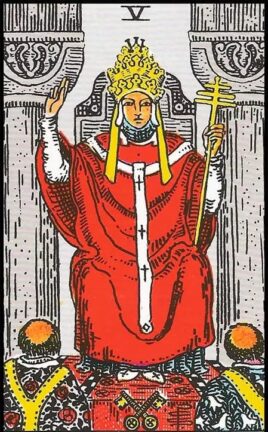
The Lovers: choice and duality
The Lovers represent the important decisions that arise from the duality between desire and responsibility. This card symbolizes the balance between the impulses of the heart and reason. It reminds us that conscious choices, aligned with our values, are key to personal growth and authentic relationships.
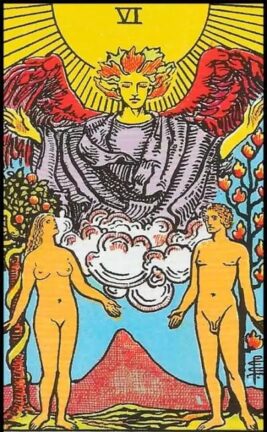
The Chariot: determination and success
The Chariot is a symbol of control, discipline and the strength to overcome obstacles. It represents moving towards goals with confidence and focus, managing the tensions between opposing forces. This card encourages us to maintain control over our lives in order to achieve success and recognition.
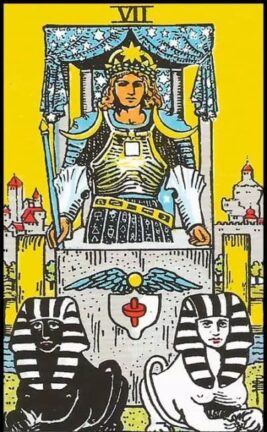
Justice: balance and truth
Justice symbolizes the search for balance, righteousness and truth. It reminds us that our actions have consequences and that honesty is essential for internal and external well-being. This card invites us to act with integrity and to evaluate our decisions fairly.
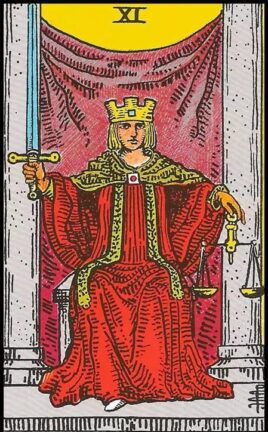
The Hermit: inner search and reflection
The Hermit represents the retreat needed to connect with our inner wisdom. It is a call to step away from the external noise and reflect deeply on our experiences. This card teaches us that the answers we seek are found within ourselves, accessible through introspection.
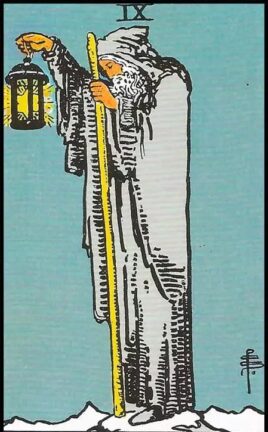
The Wheel of Fortune: change and destiny
The Wheel of Fortune symbolizes the cycles of life and the inevitable changes that shape our path. It represents destiny in constant motion and the opportunity that arises with each unexpected turn. This card encourages us to accept the flow of life with adaptability and confidence in the process.
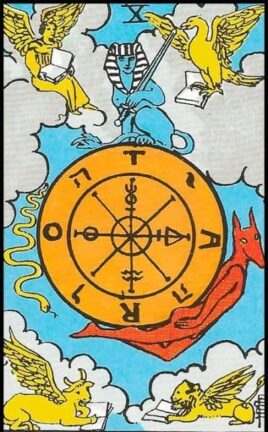
Strength: courage and personal mastery
Strength symbolizes courage, compassion and control over emotions. It represents the ability to overcome internal challenges with patience and balance, rather than aggression or brute force. This card reminds us that true power comes from personal mastery and confidence in our abilities.

The Hanged Man: sacrifice and perspective
The Hanged Man invites us to accept the sacrifices necessary to gain a new perspective. This card symbolizes the pause and willing surrender that allows us to see situations from a different angle. It teaches us that sometimes letting go of control is key to growth and clarity.
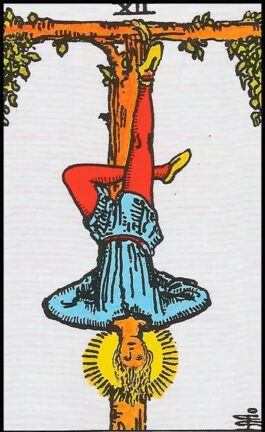
Death: transformation and rebirth
Death does not represent a definitive end, but the necessary transition to a new beginning. This card symbolizes the process of deep transformation as we leave behind what no longer serves us. It reminds us that every ending is an opportunity to be reborn with more strength and wisdom.
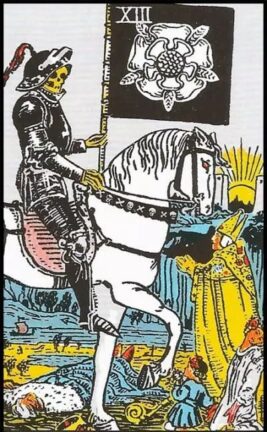
Temperance: harmony and patience
Temperance symbolizes balance, moderation and the integration of opposites. It teaches us the importance of finding harmony in our lives through patience and reflection. This card encourages us to flow with natural processes and to seek the center in all things.
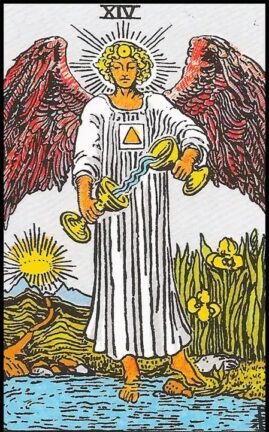
The Devil: temptations and attachments
The Devil represents the bondage to habits, desires or thoughts that limit our freedom. He challenges us to recognize these self-imposed chains and to free ourselves from them. This card reminds us that facing our shadows is necessary to regain our personal power.
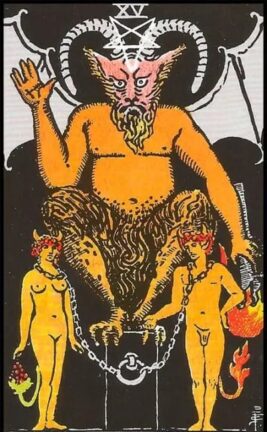
The Tower: chaos and revelation
The Tower symbolizes the collapse of structures or beliefs that are no longer sustainable. It represents a sudden change that, although chaotic, brings with it a revealing truth. This card teaches us that crises are opportunities to rebuild with authenticity and a more solid foundation.

The Star: hope and guidance
The Star represents renewed faith, inspiration and connection with the divine. It is a card that invites us to look to the future with optimism, confident that we are on the right path. It reminds us that there is always a guiding light even in the darkest moments.
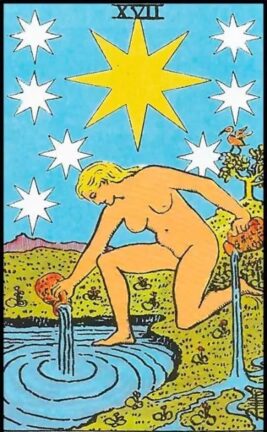
The Moon: intuition and confusion
The Moon symbolizes mystery, intuition and illusions that cloud our judgment. It represents a period of uncertainty where answers are not clear and deep emotions emerge. This card invites us to explore our subconscious and trust our intuition to overcome fear and confusion.
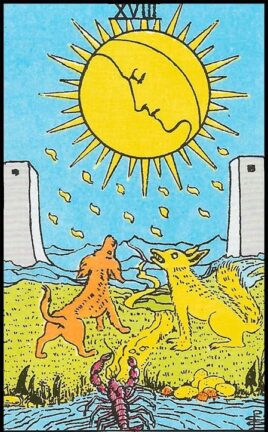
The Sun: clarity and vitality
The Sun represents enlightenment, joy and vitality. This card symbolizes the mental clarity and success achieved after overcoming challenges. It encourages us to celebrate our victories, enjoy life with optimism and embrace our authenticity with confidence.
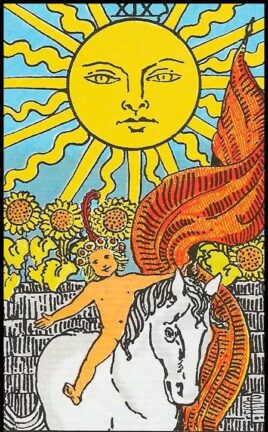
Judgment: renewal and purpose
Judgment symbolizes spiritual awakening and deep reflection on our actions. It represents an opportunity to leave the past behind and begin anew with clarity and purpose. This card invites us to listen to the call of our soul and align ourselves with our true purpose in life.
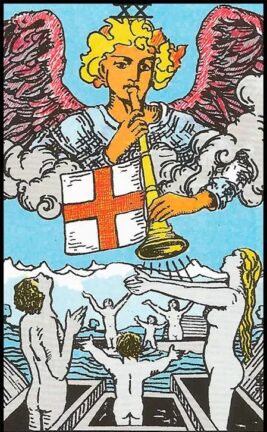
The World: fullness and fulfillment
The World is the culmination of the Fool’s journey, symbolizing wholeness, unity and the achievement of our goals. It represents the integration of all the lessons learned along the way. This card reminds us that we have reached a moment of fulfillment and are ready to begin a new cycle.
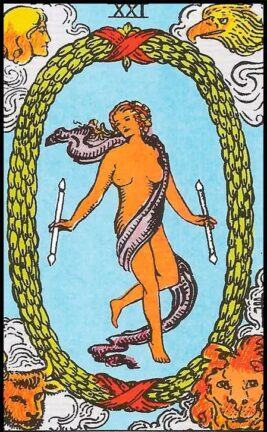
How to Interpret the Major Arcana in a Tarot Spread
To interpret the Major Arcana in a spread, it is essential to understand that each card symbolizes great lessons or transformative events in the querent’s life. These cards often point to key moments, such as profound changes, important decisions or spiritual learnings. It is important to consider the context of the question and how the card relates to the querent’s current circumstances.
In addition, the Major Arcana cards tend to have a greater weight in a reading. If several appear in a spread, this suggests that the querent is going through a significant period of growth or change. The position of each card is also crucial: it indicates whether the message is related to the past, present or future, which helps to understand the moment of learning.
Finally, interpreting the Major Arcana requires combining the meaning of the card with the reader’s intuition. Each arcane is full of symbolism that can vary according to the situation and the emotions of the querent. By actively listening and connecting with the energy of the spread, the reader can offer an accurate and enriching interpretation that guides the querent toward understanding and empowerment.
What Does 222 Mean? A Sign to Trust the Process
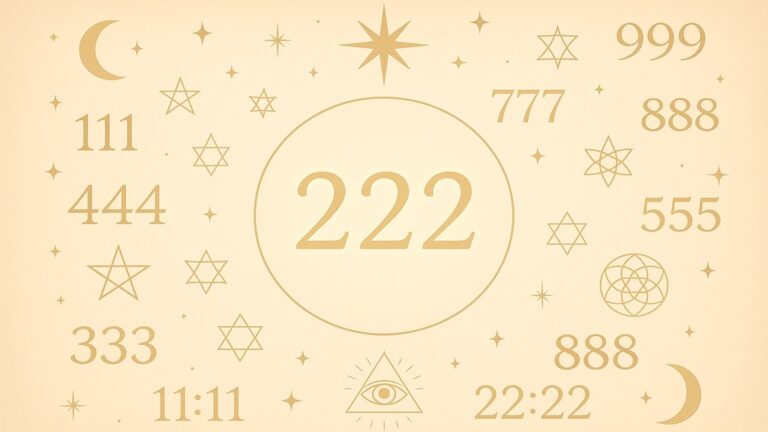
Have you ever looked at the clock and always seen 2:22? Or found this number on receipts, license plates, or signs at key moments? Far from being a coincidence, 222 is a code the universe uses to send you a clear message: you are moving in the right direction, but you need to pause, observe calmly, and trust that everything is falling into place, even if you still cannot see it clearly. In this article, we explore what 222 means, what its deeper spiritual message is, and how to interpret it in your daily life.
Table of Contents
- What Does It Mean to See the Number 222 Repeatedly?
- The Spiritual Meaning of Angel Number 222
- 222 and Inner Balance: A Message from the Universe
- What Does 222 Mean in Love and Relationships?
- What to Do When the Number 222 Appears in Your Life
- 222 and Other Number Sequences That Often Accompany It
What Does It Mean to See the Number 222 Repeatedly?
Seeing the number 222 repeatedly often coincides with moments of transition, important decisions, or inner uncertainty. This sequence appears to remind you that you are not alone, that there is a higher order guiding your process, and that the key now is to have faith in what is taking shape behind the visible.
It can also indicate that you are entering a stage where patience and serenity will be your best allies. 222 does not come to pressure you, but to encourage you to release control, remain calm, and let everything settle with time. It is confirmation that, even if you do not see immediate results, the universe is acting in your favor.
The Spiritual Meaning of Angel Number 222
222 is an angel number, which means it has a deep spiritual origin. Its frequent appearance is a sign that your guides are present, supporting you and gently accompanying your path. It is a call to strengthen your inner trust, listen to your intuition, and flow with greater surrender.
From a spiritual perspective, 222 speaks of balance, integration, and inner harmony. It reminds you that you do not need to have everything resolved to keep moving forward. Many times, real growth happens in the midst of uncertainty, when you choose to trust without seeing. This sequence can also mark key moments when relationships or decisions with a strong soul purpose are activated.
In the series Mystery Teachings, available on Gaia, Dr. Theresa Bullard explores how numbers, sacred structures, and the principles of the universe act as hidden languages that guide our expansion. There it is revealed how sequences like 222 not only have symbolic meaning but also operate as frequencies that can help you activate your highest purpose.
222 and Inner Balance: A Message from the Universe
When 222 appears repeatedly in your life, it is an invitation to reconnect with your center. Many times, we are caught up in constant doing, seeking certainty outside ourselves, and this number arrives to remind you that true balance begins within. It is a subtle but firm message that urges you to pause, breathe, and trust that everything is settling in its right time.
222 also symbolizes the need to align what you feel with what you do. If there is a gap between your intentions and your actions, this sequence appears as guidance to adjust your energy. It is not about forcing results, but about cultivating coherence and allowing things to flow from a more authentic and conscious space.
This number often manifests during stages when you are going through changes, emotional challenges, or key moments in your growth. In every case, its message is the same: remain in your center, let go of expectations, and have faith in the balance that is forming, even if you cannot yet see it clearly.
What Does 222 Mean in Love and Relationships?
In the realm of love, 222 is a sign to trust in the process of relationships. It may appear when you are meeting someone with whom you feel a special connection, or when you need to reassess the harmony within an existing relationship. This sequence invites you to observe how you feel in the connection and to listen to what your intuition has been pointing out.
It can also remind you that before connecting with another person, you need to be well with yourself. If you are waiting for a relationship, 222 signals that something is being prepared, but it is important to trust in the perfect timing. And if you are in a partnership, this number encourages you to nurture mutual balance, communication, and shared growth.
In some cases, 222 is linked to reunions or relationships that activate deep lessons. It does not always point to immediate stability, but it does indicate a valuable moment to heal, understand, and choose consciously. In love, as in life, everything aligns when there is trust, patience, and inner balance.
What to Do When the Number 222 Appears in Your Life
The first thing you can do when 222 shows up repeatedly is to pause and observe: what are you feeling at that moment? what are you thinking about? what decision are you about to make? Many times, this sequence appears as a sign that you need to slow down, release control, and open yourself to a subtler form of guidance. It is an opportunity to step out of autopilot and reconnect with what your intuition has been trying to show you.
One valuable way to support this process is to keep a journal where you record the synchronicities you experience in your daily life. It could be a word that repeats, a dream, a sign, an unexpected conversation, or even an inner sensation that is hard to explain. By noting these moments, you begin to recognize a more subtle language through which the universe communicates with you. Over time, that record becomes a tool for deep connection, revealing patterns and messages that may have previously gone unnoticed.
You can also support this process with tools such as meditation, automatic writing, or rituals of conscious intention. These practices help you integrate the energy of 222 and make decisions from a more aligned place. Remember, this number does not come to tell you what to do, but to remind you that clarity arrives when you are calm, centered, and open to the universe’s guidance.
222 and Other Number Sequences That Often Accompany It
222 does not usually manifest alone. It is common for it to appear alongside other number sequences that amplify its message or add specific nuances to the guidance you are receiving. These combinations are part of a subtle language the universe uses to communicate with you, inviting you to pay attention to the inner movements you are experiencing.
- 11:11 – Spiritual awakening: This number indicates that you are in an energetic portal. It reminds you that you are ready to raise your consciousness and connect with your deepest purpose.
- 22:22 – Manifestation and balance: A clear sign that your thoughts are taking form. It is an ideal time to act with confidence and coherence.
- 1234 – Progressive advancement: Marks an orderly process of growth. It indicates you are on the right path and that each step is building something solid.
- 111 – Intention and creation: A call to focus your energy. Your thoughts are creating reality, and it is important to be aware of what you are projecting.
- 333 – Spiritual expansion: Indicates you are in a moment of inner growth. It also signals that your guides are near, supporting your process and motivating you to express yourself authentically.
- 444 – Spiritual protection: Represents the support of your guides. You are being cared for while going through important changes.
- 555 – Transformation and change: Announces a stage of deep renewal. It is time to let go of the old to allow the new to enter with greater strength.



